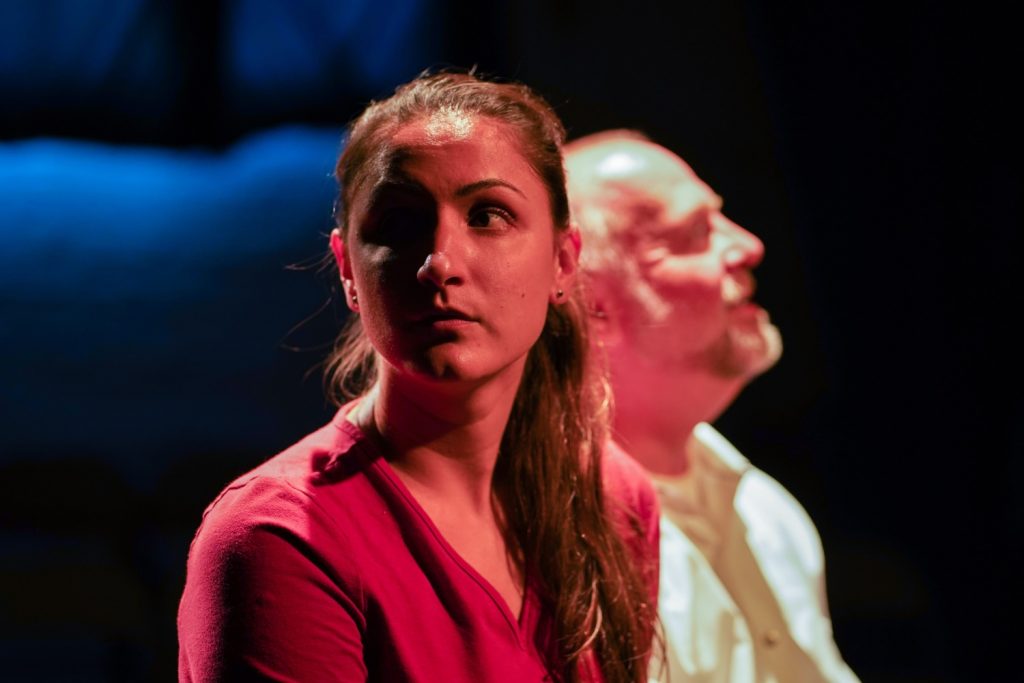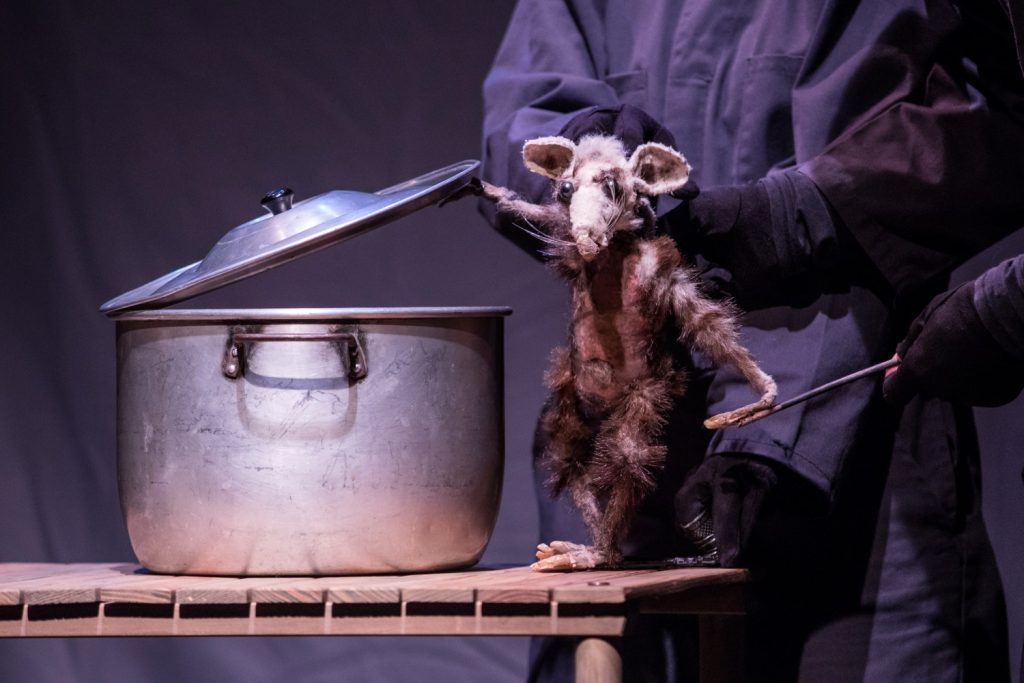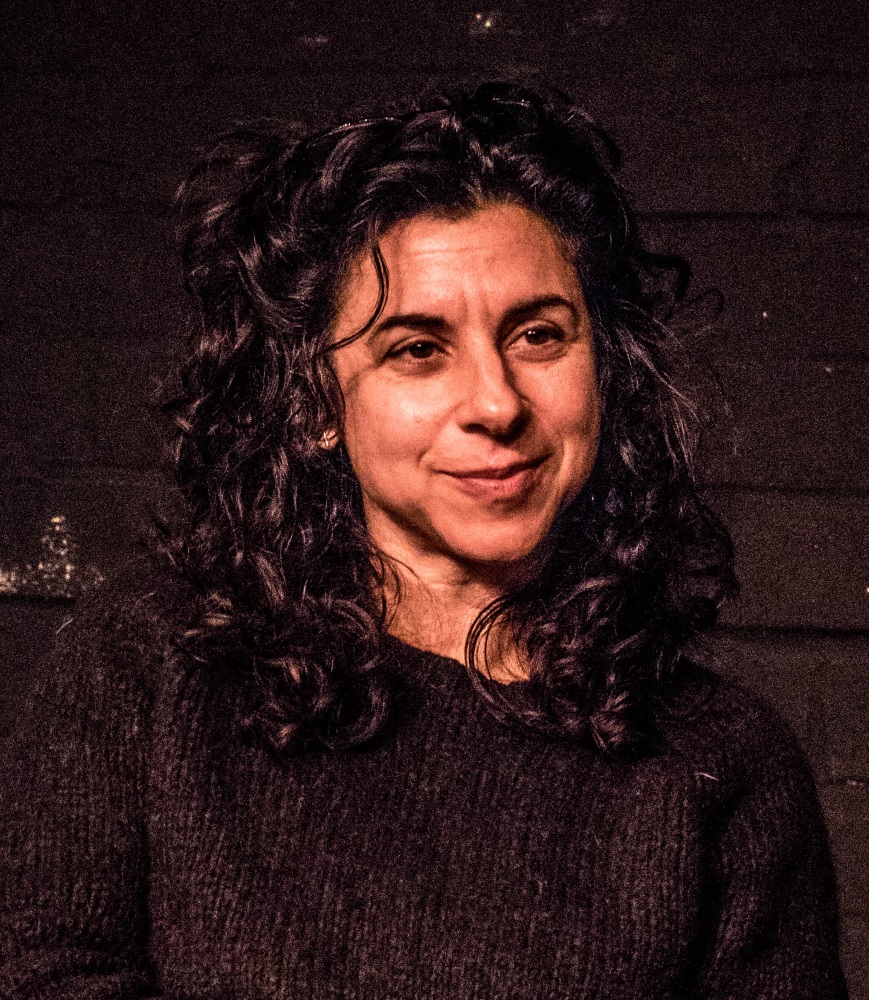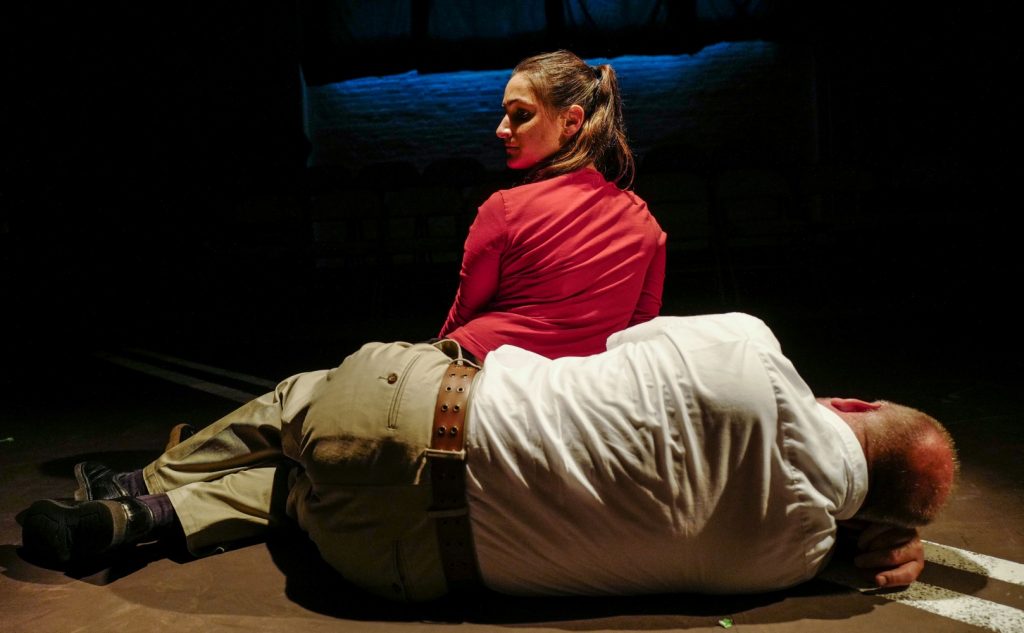This year’s through-theme at the Ko Festival of Performance, is Habitat (human) – a topic that also runs through two more current Valley offerings: How I Learned to Drive, from Ghost Light Theater in Holyoke, and Moving Water, a work in progress at Serious Play Theatre Ensemble in Northampton. All three offer rich cultural nourishment.
Ko’s season motif embraces intimate tales of migration and displacement, new homes and hometowns. The festival opened last weekend with a multidisciplinary performance from Hilary Chaplain and company about a cabaret – in a concentration camp.
The Last Rat of Theresienstadt is a fact-and-fiction hybrid set in the Nazis’ hybrid camp-and-ghetto in the Sudetenland, where Jews were warehoused en route to the extermination camps, or starved to death, and occasionally showcased as evidence of the Germans’ “humane” treatment of prisoners. In Last Rat, the camp has a semi-clandestine cabaret featuring comedy acts and headlined by Sofia Brünn, former star of the Berlin club scene, now potato peeler in the ghetto kitchen.
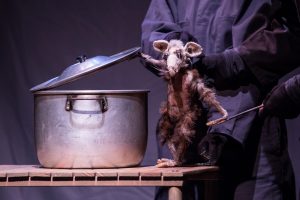 The show employs shadow puppetry (a vaudevillian double act doing Hitler jokes), satirical songs (by Weimar composers), drawings of the camp (by Theresienstadt prisoners) and puppetry – the rat of the title, who upstages all the multimedia and the human star.
The show employs shadow puppetry (a vaudevillian double act doing Hitler jokes), satirical songs (by Weimar composers), drawings of the camp (by Theresienstadt prisoners) and puppetry – the rat of the title, who upstages all the multimedia and the human star.
Created by Sonia Yoka and brought to miraculous life by puppeteers Ariel Lauryn and Mindy Escobar-Leanse, Pavel is a scrawny, scruffy, smart-talking little scavenger who shinnies up a table leg like an acrobat. He’s the last rat left in the place, as all the others have decamped because there’s nothing left to eat. But he stayed because he’s a fan of Sofia’s act. “Culture is my food!” he exclaims.
Last Rat is a complex ensemble effort – 19 collaborators are listed in the program – and I found the varied elements individually fascinating if a bit disconnected, and Chaplain’s performance less dynamic than her rodentious co-star’s.
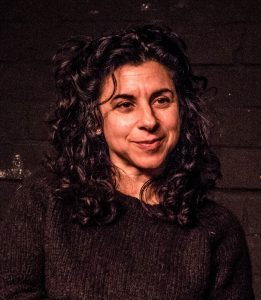 This weekend Ko presents another aspect of the season’s theme, “cracking open the past by re-examining the habitat one grew up in.” In OK, OK, writer/performer Katie Pearl recalls “what she learned – and didn’t learn – about Oklahoma history while growing up in Tulsa, OK,” particularly about racism and “the truths and untruths we as a country tell ourselves.” She’s supported by a three-woman chorus of Ko associates, Laurie McCants, Carrie J. Cole and Sheila Siragusa.
This weekend Ko presents another aspect of the season’s theme, “cracking open the past by re-examining the habitat one grew up in.” In OK, OK, writer/performer Katie Pearl recalls “what she learned – and didn’t learn – about Oklahoma history while growing up in Tulsa, OK,” particularly about racism and “the truths and untruths we as a country tell ourselves.” She’s supported by a three-woman chorus of Ko associates, Laurie McCants, Carrie J. Cole and Sheila Siragusa.
Friday-Sunday in the Holden Theater, Amherst College, kofest.com
Probing the Past
Cracking open the past to re-examine it is also what Paula Vogel’s protagonist does in the 1997 Pulitzer winner How I Learned to Drive. It’s the story of a slow, painful awakening, unwrapped in a series of recollections by “Li’l Bit,” who looks back as an adult at years of sexual abuse from her uncle. Ghost Light Theater’s production, playing through this weekend at Gateway City Arts, is one of the summer’s most compelling dramas.
The play’s genius, what makes it far more than a sad or lurid memoir, is the character of Uncle Peck. He’s a pedophile, alright, but he’s also the only one in Li’l Bit’s dysfunctional family who actually understands and encourages her. He teaches her to drive “like a man,” to be aggressive and purposeful, to think ahead and protect herself.
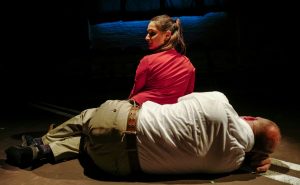 Like the memories it’s composed of, the play shifts back and forth in time, alighting on vignettes from Li’l Bit’s childhood and adolescence. Scene changes are announced with drivers-manual double entendres (“Shifting from First to Second Gear”) and a “Greek Chorus” of three actors – Joshua Aaron Mason, Hannah McCluskey and Becky Rodia Schoenfeld – play all the supporting roles. We see Li’l Bit in the car with Uncle Peck, as well as at school with classmates mocking or ogling her well-developed bust, and at home with a mother who drinks and grandparents who scoff at her love of Shakespeare.
Like the memories it’s composed of, the play shifts back and forth in time, alighting on vignettes from Li’l Bit’s childhood and adolescence. Scene changes are announced with drivers-manual double entendres (“Shifting from First to Second Gear”) and a “Greek Chorus” of three actors – Joshua Aaron Mason, Hannah McCluskey and Becky Rodia Schoenfeld – play all the supporting roles. We see Li’l Bit in the car with Uncle Peck, as well as at school with classmates mocking or ogling her well-developed bust, and at home with a mother who drinks and grandparents who scoff at her love of Shakespeare.
Carissa Dagenais’ affecting portrayal of Li’l Bit draws on how she learned to transcend her own teenage traumas, underplaying the role rather than melodramatizing it. And Gene Choquette’s Uncle Peck is a complex, moving portrait of a conflicted man the script suggests is probably passing on a cycle of abuse. Sue Dziura’s direction is effectively spare, and so is her in-the-round setting, a dark square bisected by a pair of white lines running down the road from innocence to hard-earned experience.
At Gateway City Arts, Holyoke, July 11-13, gatewaycityarts.com & Ghost Light’s Facebook page.
Creating the Future
 Both Last Rat and OK, OK were first developed during residencies at the Ko Festival, a practice that gives space and time for creative exploration. This month in Northampton, A.P.E.@Hawley hosts What We See, a month-long developmental project for five local theater works.
Both Last Rat and OK, OK were first developed during residencies at the Ko Festival, a practice that gives space and time for creative exploration. This month in Northampton, A.P.E.@Hawley hosts What We See, a month-long developmental project for five local theater works.
This week, Serious Play Theatre Ensemble is working on Moving Water, an interdisciplinary collaboration among five artists – designer Robin Doty, visual artist Roz Driscoll, musician Jonny Rogers, playwright Eric Sanders, conceived and directed by Sheryl Stoodley – with an ensemble of performers “exploring the movement, sound, musical, visual and dramatic possibilities around our often invisible yet extremely valuable resource, water.” A walk-through and discussion of the work in progress takes place at 7:30 on Saturday at 33 Hawley, Northampton. Email seriousplaytheatre@gmail.com or phone 413-588-7439 to attend.
Photos by Kasia Chmura (Last Rat) and Paul Bloomfield (Ghost Light)
The Stagestruck archive is at valleyadvocate.com/author/chris-rohmann
If you’d like to be notified of future posts, email Stagestruck@crocker.com

